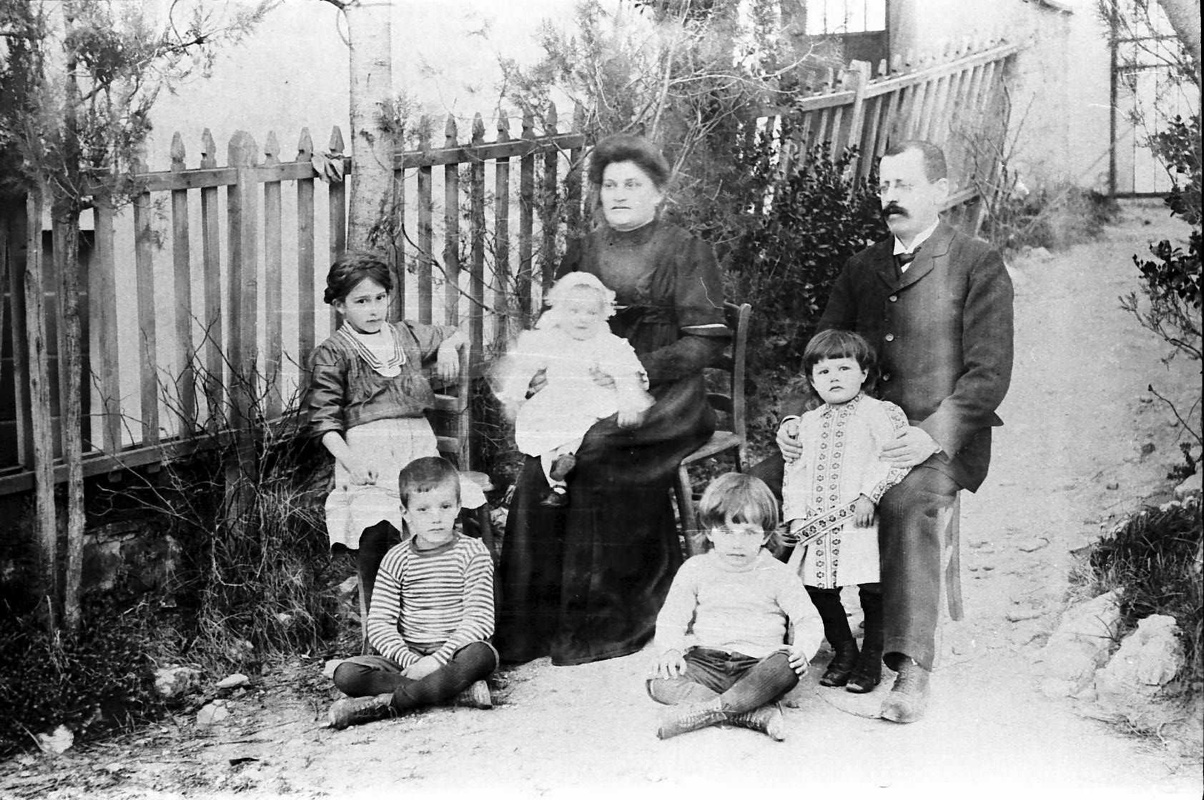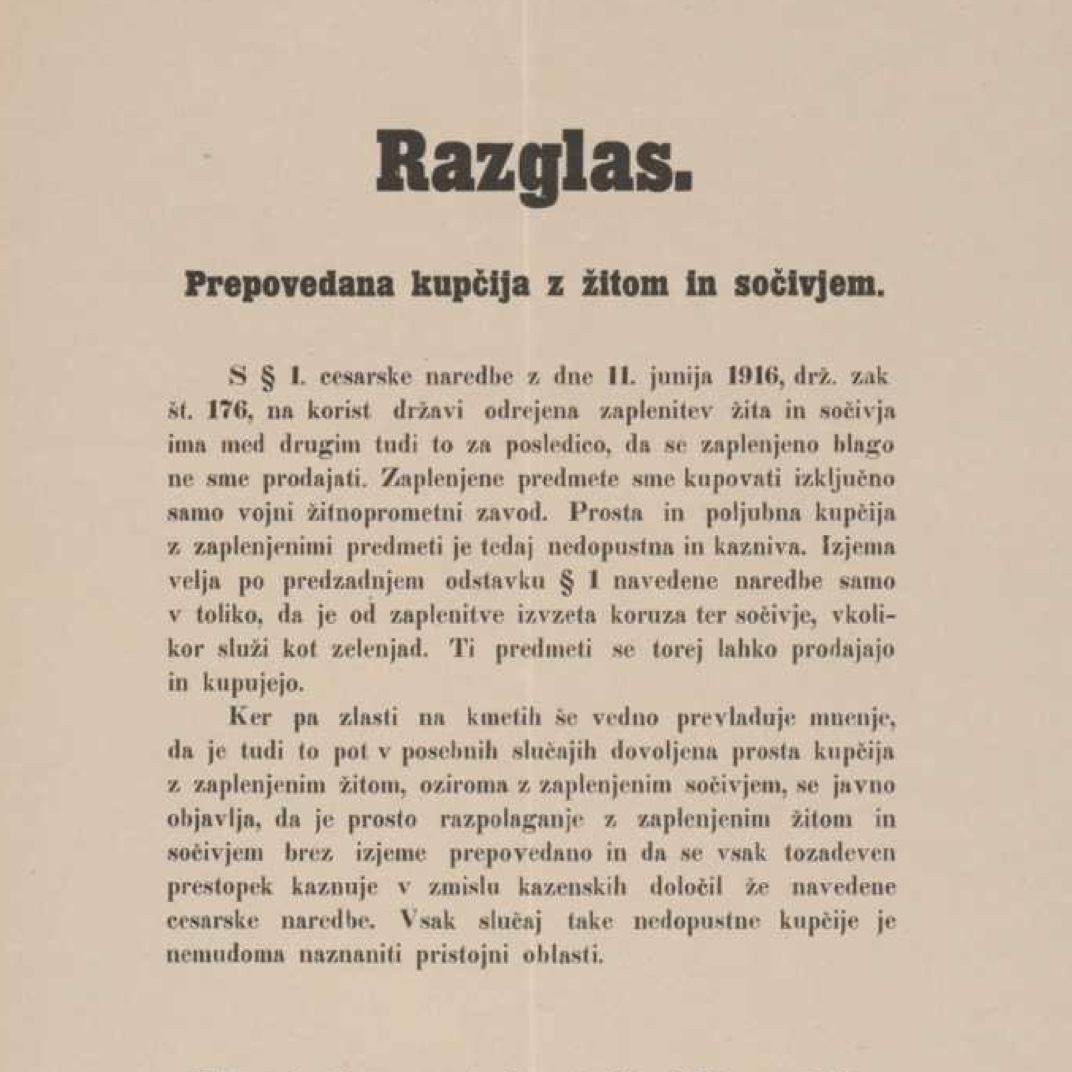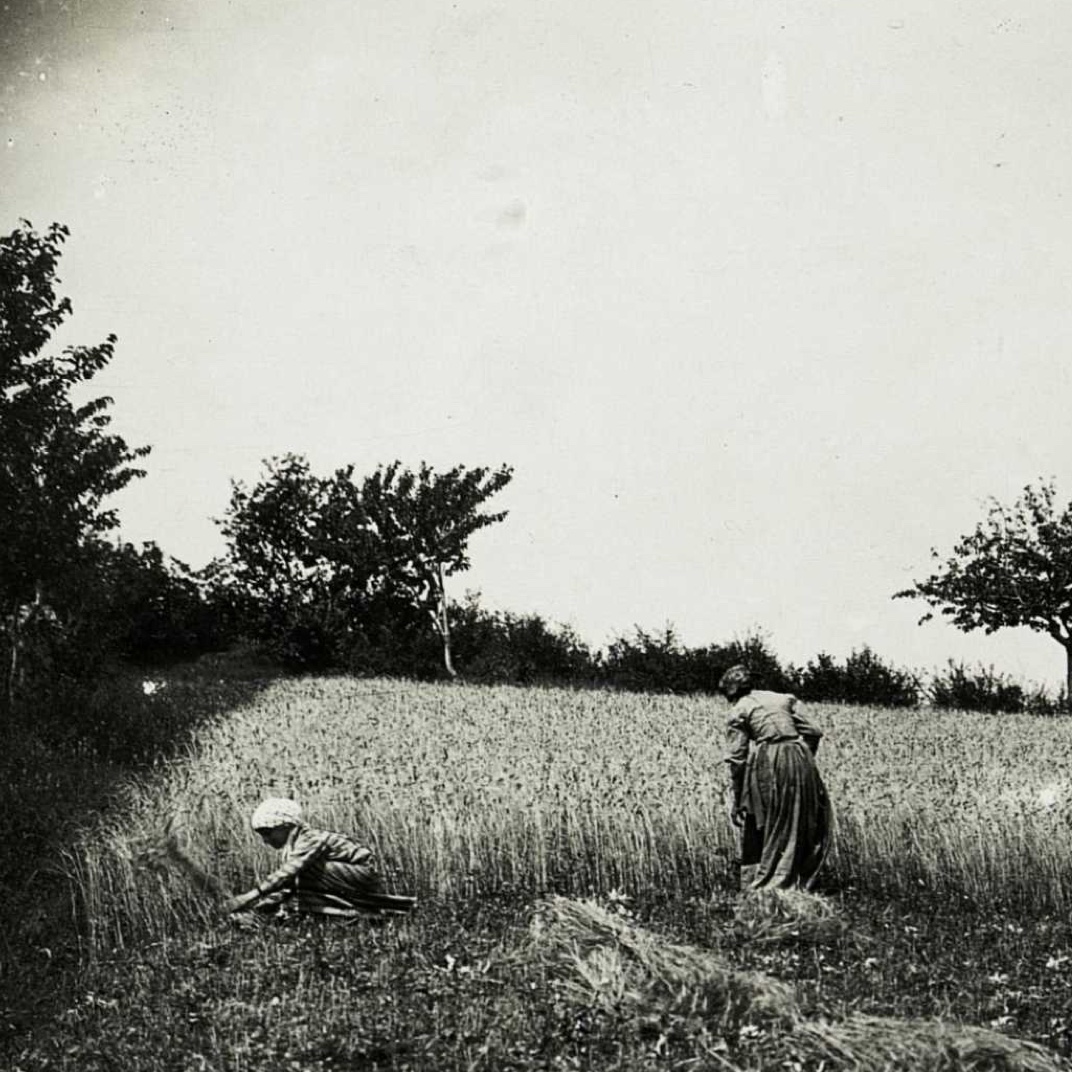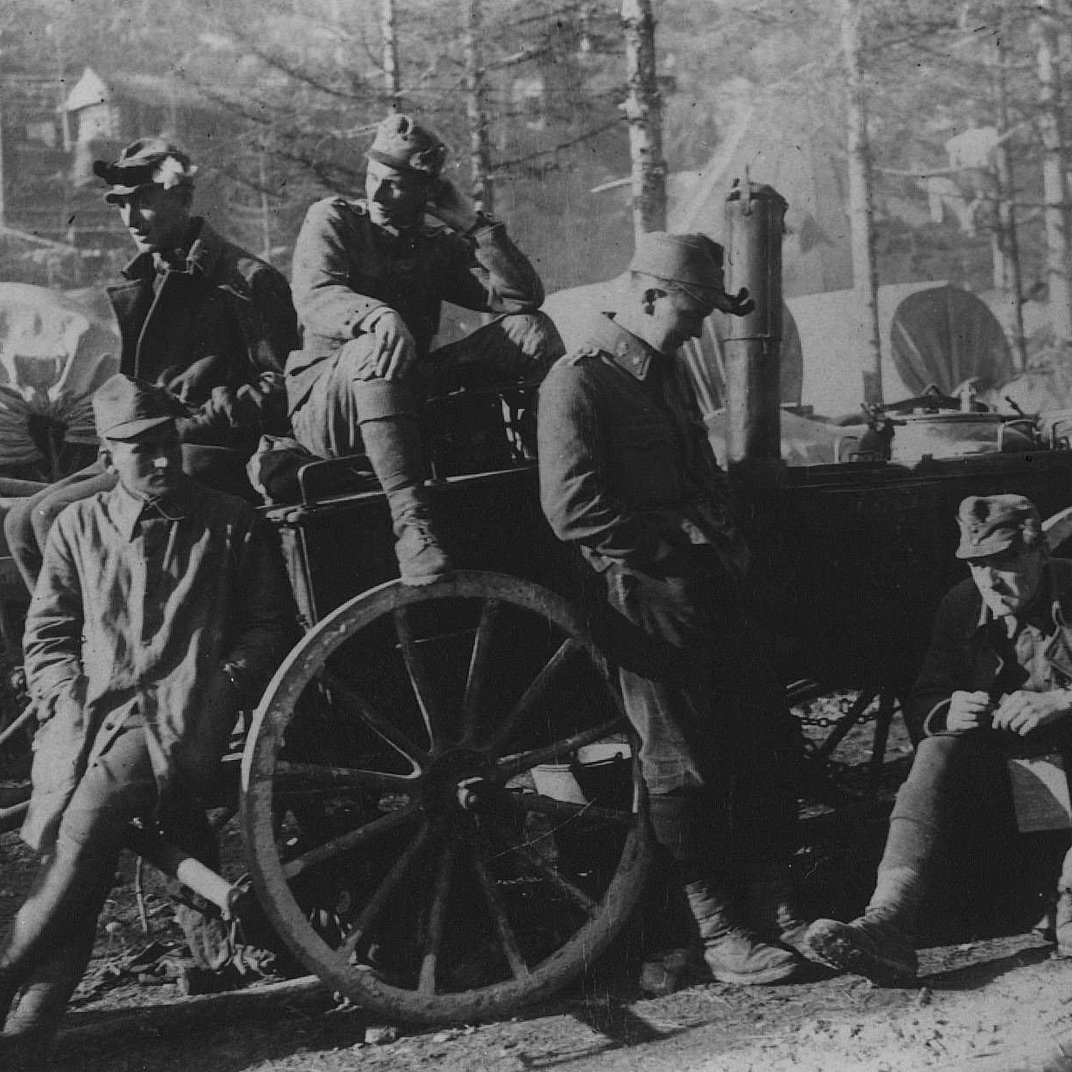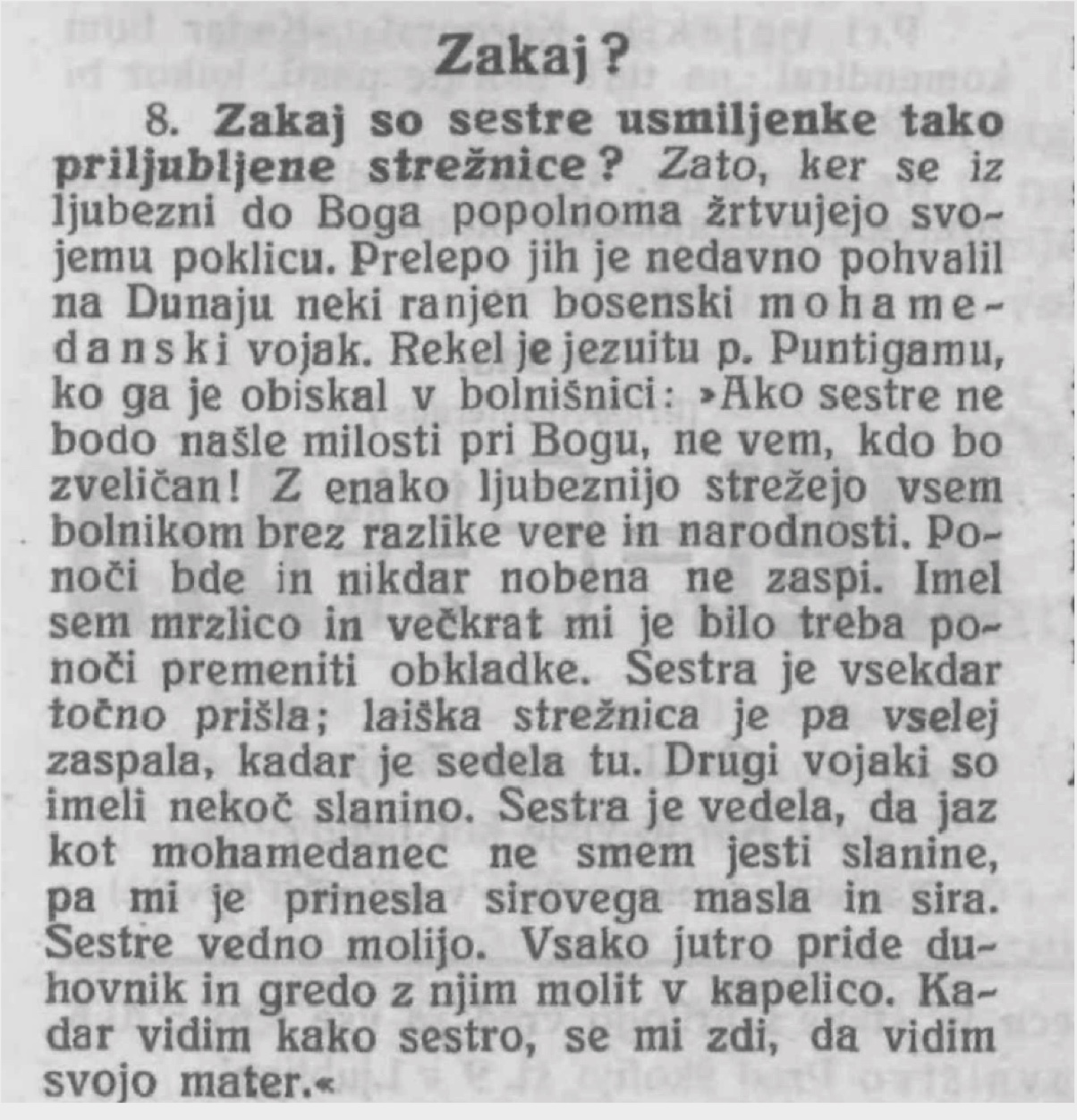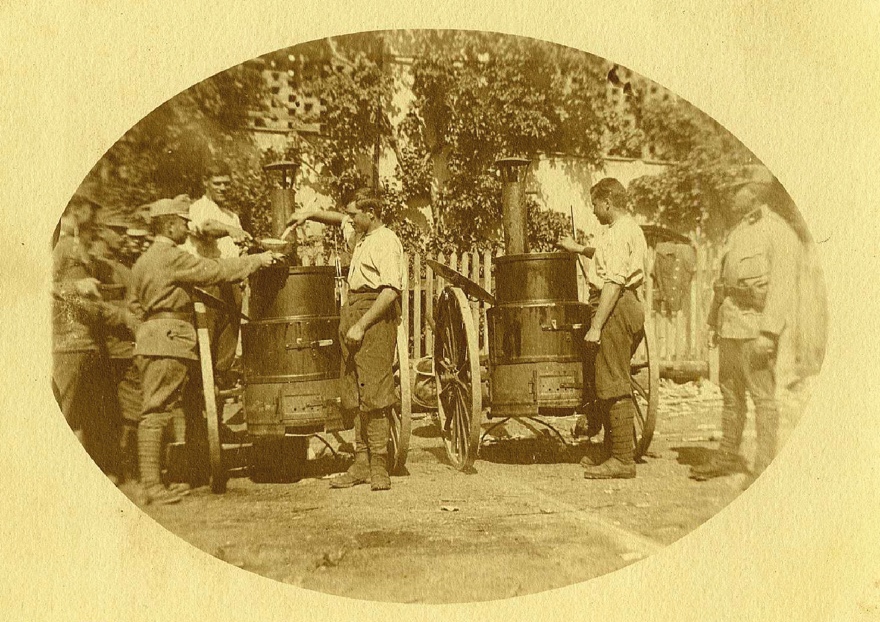(War) Fare.
Women behind
the Isonzo Front Line
Everyone was losing weight—people’s strength was on the wane. My weight reduced from 87 to 77, and so did everybody else’s, from 55 kg to even 30 kg. Lower. Oh, you futile war, whose fault is it—the bloodshed and starvation— especially along the Adriatic coastline, in Istria, and the Littoral Trieste.
A letter by Marija Košuta, Zagreb, 17. 5. 1918
The Great War caused a rift in the European daily routine and transformed the diet. Soon after its outbreak, particularly in the Austrian part of the Habsburg Monarchy, food shortages emerged. The bulk of supplies was, just as in other warring countries, intended for the army. Abundance at the table, the pre-war domain of the middle and upper class, became a vague memory. The variety and frequency of sustenance gave way to availability and attainability. The introduction of food price limits and food stamps by the Austrian authorities also failed to prevent soaring prices, occasional tumults, and an increase in violations of law. Famine was faced acutely first and most by the civil population immediately behind the front lines, however, in the course of the war, shortage shifted to the interior as well. Particularly in larger cities, silverware, pieces of Biedermeier furniture, and fur coats were being bartered for sacks of potatoes and flour. Impoverished and undernourished women, both bourgeois and workers, sought to find life necessities to facilitate the survival of their families and, in particular, children. The high mortality rate of the refugee population, not merely of the part that was placed in bigger refugee camps by the Austrian authorities, but also of the part that found temporary dwelling on farms in the regions of Štajerska and Kranjska, indicate the extent of shortage that was present also in the rural environment. Regular requisitions of crops and commodities for military purposes aggravated considerably the provision of life’s necessities also in the countryside. Soldiers’ joy as food was being handed out abundantly in the vicinity of the trenches was often staged to the purpose of war propaganda. In the cruel reality of the war, the population died of hunger mostly in the hinterland, in the last war years food shortage was increasing also among soldiers.
Refugees
As the monarchy’s economic problems deepened, refugees became one of the most imperilled social groups. In 1916, the Soča Valley saw five offensives, the Sixth Battle marking a watershed. Some 6,000 inhabitants of Gorizia and its surroundings became refugees. After the town’s conquest, the Italian authorities took about 500 of them to the interior of the country. The new refugee wave was an additional burden for the Austrian food provision. The shortage was felt less severely by refugees in Italy, since Italy did not have major difficulties in terms of food provision. A portion of refugees from the Gorizia area found temporary homes in Austrian refugee camps, the other part was dispersed over the Austrian hinterland. Access to earnings and food was limited in refugee camps, living conditions were poor. Those who stayed in the hinterland were often met with aversion by their neighbourhood. In 1916, Zavod za pospeševanje obrti (Office for Promotion of Trade) started its operation in the Kranjska region that along with Posredovalnica za goriške begunce (Agency for the Goriška Region Refugees) assisted the local refugees of both genders in finding work.
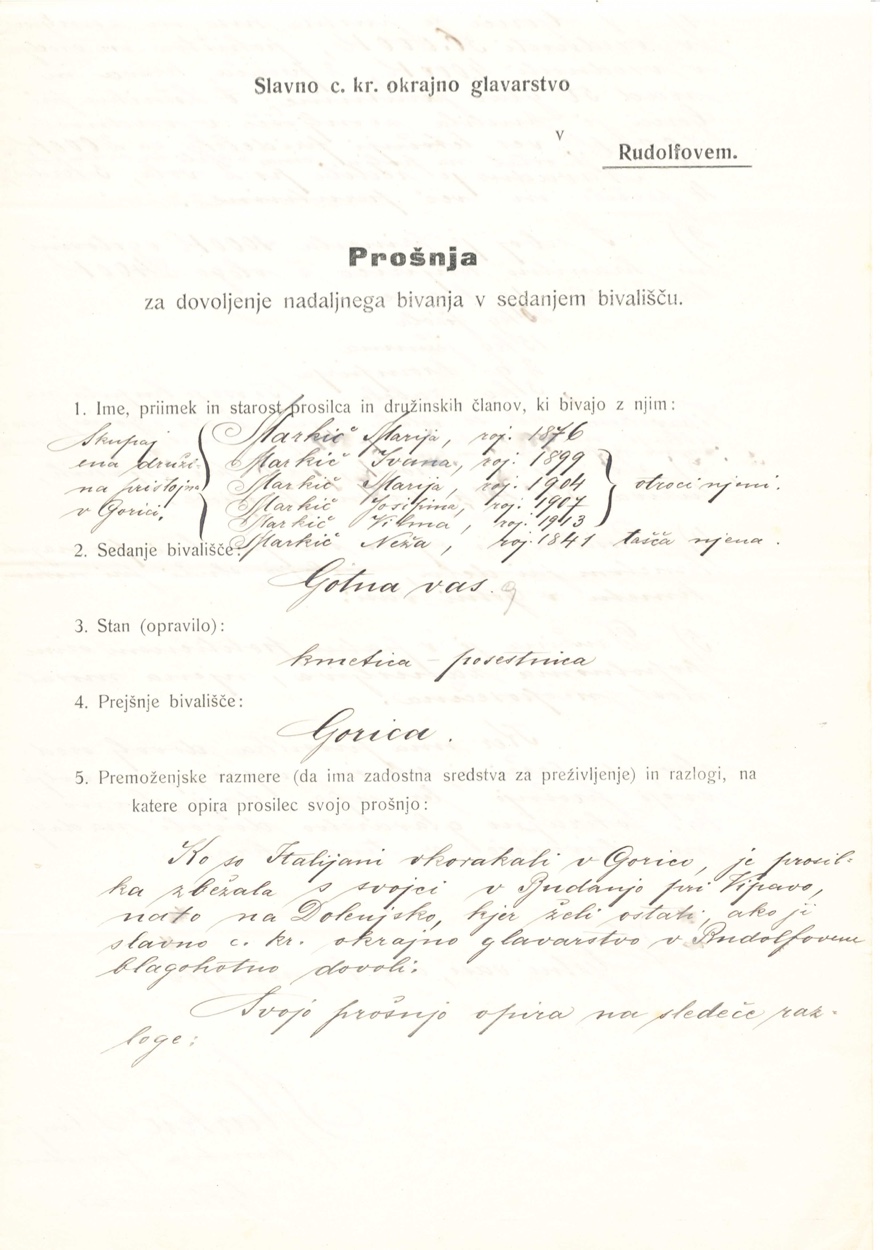
Prošnja za začasno prebivališče begunke Marije Markič iz Gorice, ki se je skupaj s štirimi otroki in taščo naselila v Gotni vasi pri Novem mestu.
Vir: Zgodovinski arhiv Ljubljana.
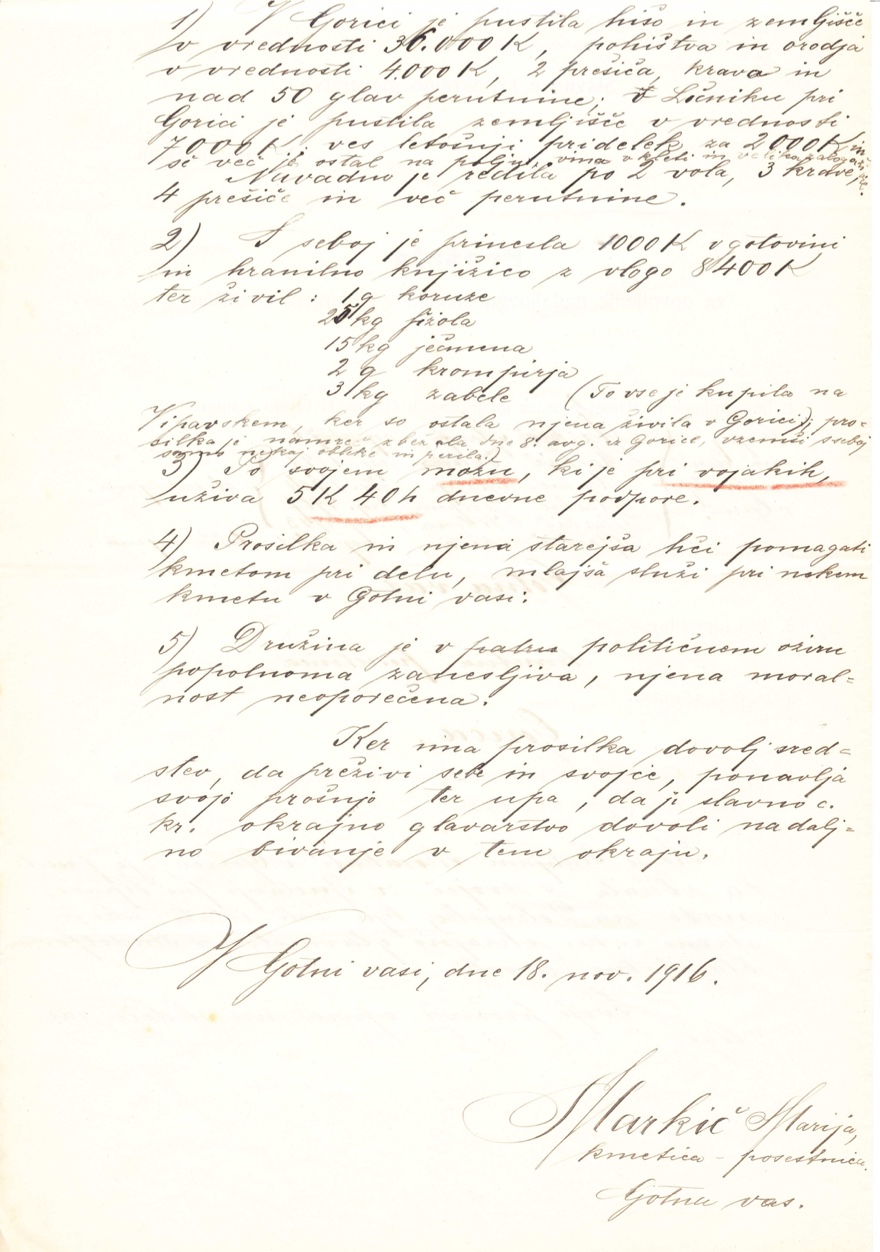

Razglednica iz begunskega taborišča Steinklamm, ki jo je leta 1916 medicinska sestra Valerija Valjavec poslala svojemu očetu. Na sliki so tuberkulozni otroci pred taboriščno mlekarno.
Vir: Goriški muzej.

Criminality
As the war continued and shortage was increasing, women’s rebelliousness was growing. Many of them did not see the enemy in members of other nations, but rather in governmental authorities. Women felt they were victims of violence inflicted by their own country. In their concern for survival, some of them resorted to trickery to obtain state support illegally. They forged travel permits or identification documents in order to bypass restrictions of movement by the military. By forging food stamps, they secured the much needed food for their starving children. The fastest way to obtain food was to steal it occasionally, which was done by individuals or gangs of thieves. Women farmers rebelled to requisitions by hiding their crops, while market traders increased the prices of their rare foodstuffs on several occasions. Tumults caused by long queues in front of bakeries and stores turned, particularly in larger cities (e.g. Trieste), into broader demonstrations by dissatisfied and enraged masses.

Neža in Janez Prešeren iz Lesc sta bila 9. septembra 1916 zaradi soudeležbe pri tatvini 170 kg moke obsojena na šest tednov oz. dva meseca ječe. Janez je bil poleg tega še odpuščen in kazensko vpoklican v vojsko. Neža je v obupu spisala več prošenj, v katerih je pojasnjevala svoj težak položaj in prosila za odložitev kazni do konca vojne.
Vir: Arhiv Republike Slovenije.
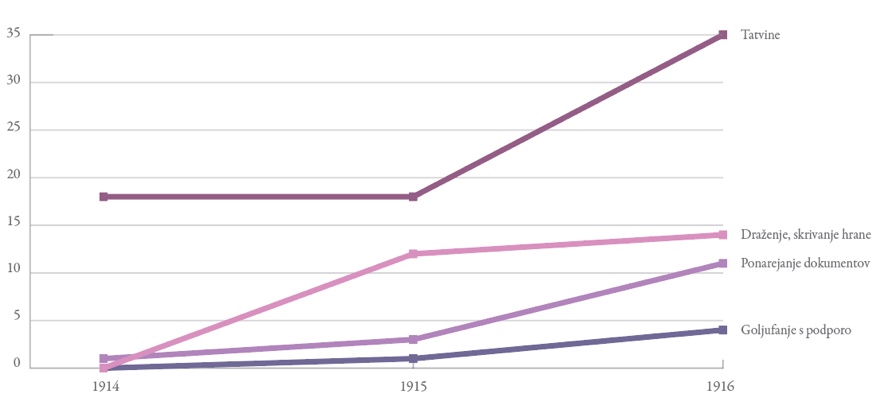
Dolgotrajnost bojevanja in s tem težak položaj prebivalstva v zaledju se je odražal tudi v povečanju števila ženskih kaznivih dejanj, povezanih s preskrbo.
Vir: Arhiv Republike Slovenije.
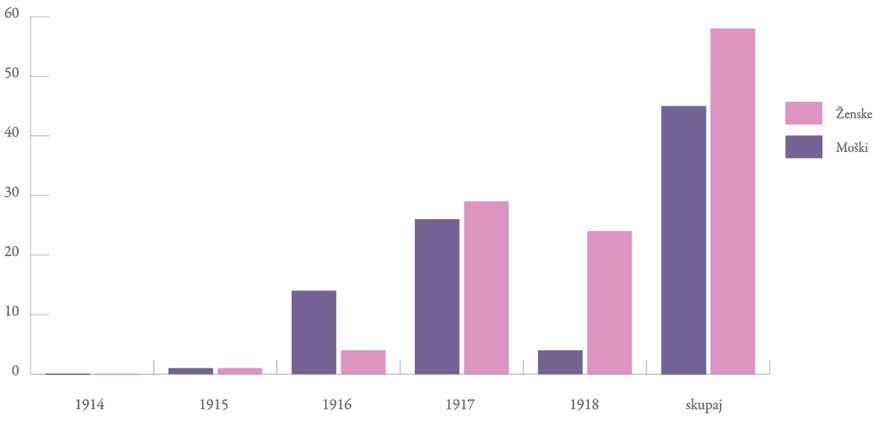
Obtožbe draženja živil na Deželnem sodišču v Trstu po spolu. Kmetje, peki, mesarji ali trgovci so pogosto goljufali tako, da so nezakonito dražili uradno predpisane cene.
Vir: Archivio di Stato di Trieste.

Vojaški zasegi so bili pogosti in najenostavnejši ukrepi za zagotavljanje zadostne preskrbe vojakov in civilistov. Nekatere ženske so se tem ukrepom zoperstavljale s skrivanjem pridelkov. Če so jih ob tem zasačili, so jih lahko obsodili na nekajdnevne ali tedenske zaporne kazni.
Vir: Ilustrirani Glasnik, 20. 6. 1916. (www.dlib.si)

Državne podpore družinam vpoklicanih vojakov so le stežka nadomeščale izgube ob odsotnosti očetov, mož, sinov ali bratov. Vendar pa so podpore predstavljale mamljiv način za goljufanje. Z namernim ali nenamernim prikrivanjem datuma vojakove vrnitve ali z izdajanjem za nekoga drugega so si lahko ženske nezakonito pridobile ali spreminjale višino oz. dolžino izplačila državne podpore.
Vir: Arhiv Republike Slovenije.
Educated Women’s Kitchens
In the households of educated middle- or high-class women, as a rule, five meals were served. Next to three main meals—breakfast, lunch, and dinner— they also had a morning and an afternoon snack. The richest among them employed cooks, who bought food in town markets or from farmers. Food was kept cold in pantries and cellars. The kitchen had a stone or iron stove with an oven, a table, cupboards, and shelves. Special attention was paid to setting the table, and serving in dining rooms or tea rooms. Prior to the outbreak of war, their food was more diverse than the food eaten by women farmers or workers. The main meals included soups, meat dishes, salads, and side dishes. Cakes and desserts took up a special place. Wartime food shortage impoverished their diet that was getting increasingly frugal.
Pismo Henrika Tume ženi Mariji v Trst. Dunaj, 14. 1. 1918.
Vir: Henrik Tuma, Pisma. Osebnosti in dogodki (1893–1935), 1994.
Po poti navdajala me je skrb za te in družino. Ako izmanjka v Terstu kruha ni izključno, da ljudstvo podivja in da prične pleniti po mestu. Govori še s Predenconko, da naj hišne dveri takoj zaklene, ko nemiri prično. Moko, mast in živila poskrij takoj, ali na pomol (stukin) ali pod moj zofa, ali kamor se ti bolje zdi. Lačno ljudstvo pojde gotovo na boljše hiše in za živežem …
Recept za peko vojne torte, ki se jo pripravi brez bele moke in maščobe in le iz enega jajca.
Vir: Marija Remec, Varčna kuharica. Zbirka navodil za pripravo okusnih in tečnih jedil s skromnimi sredstvi, 1915.
Deni v skledo sedem žlic črne kave, sedem žlic mleka, 28 dkg ržene moke, 15 dkg sladkorja, žličico kakava, eno celo jajce, drobno zrezane limonine lupine, cimeta in druge dišave in cel pecilni prašek (1dkg). Vse dobro stepaj in stresi v tortni model, peci v precej vroči pečici. Pečeno namazi z mezgo in potresi s sladkorjem.
City: Nutrition of the Civil Population
In war time, food was scarce especially in the Austrian part of Austria-Hungary. The agricultural production was dramatically reduced by the war devastation of Galicia, the central grain-producing area, and by the fact that the male work force had left for the front. In 1915, nearly a year after the beginning of the war, first signs of shortage were visible. Despite the new legislature, the administrative apparatus did not manage to improve the supply. The food production did not meet the demands of the army and the civil population.
The cities suffered the greatest shortage, the black market and smuggling were booming. The poorest urban population, in particular, frequently visited the nearby or remote countryside (manly in Hungary). They bought predominately flour, potatoes and lard from the farmers.
Fran Milčinski (1867–1932), slovenski pravnik, pisatelj in dramatik je v svojem dnevniku živo popisal medvojno stisko ljubljanskega prebivalstva.
Vir: Fran Milčinski, Dnevnik 1867–1932, 2000.
2. septembra, sobota
Zjutraj šel čez trg. Pri stojnici s cenenim mesom okoli 120 ljudi (Dedo pravi, da se nastavljajo že opolnoči.) – Črno ljudi tudi pri prodajalki kruha.
Danes ukazi v listih, da se brezmesni dnevi pomnože na tri in se uvedejo karte za mast.
7. oktobra, sobota
Angela prišla iz Lukovice in privlekla s sabo 59 jajc, 2 kg mesa, 6 kg masla, 1/4 kg surovega masla. Nekaj tega blaga je dobila v Trnavi in sta z B. čakala, da je kura znesla jajce: »Malo počakajte, že vstaja … že stoji!« hvaležen prizor za risarja: Zbrano ljudstvo pred kurjim gnezdom z jajčnimi kartami.

Donos in obseg zasejanih kmetijskih površin v avstrijskem delu monarhije sta se v letih vojne močno zmanjšala.
Vir: Max Stephan Schulze, Austria-Hungary's economy in World War I, v: The economics of World War I, 2005.

V Ilustriranem glasniku so duhovito povzeli uvedbo prodaje živil na karte.
Vir: Ilustrirani glasnik, 28. 9. 1916. (www.dlib.si)
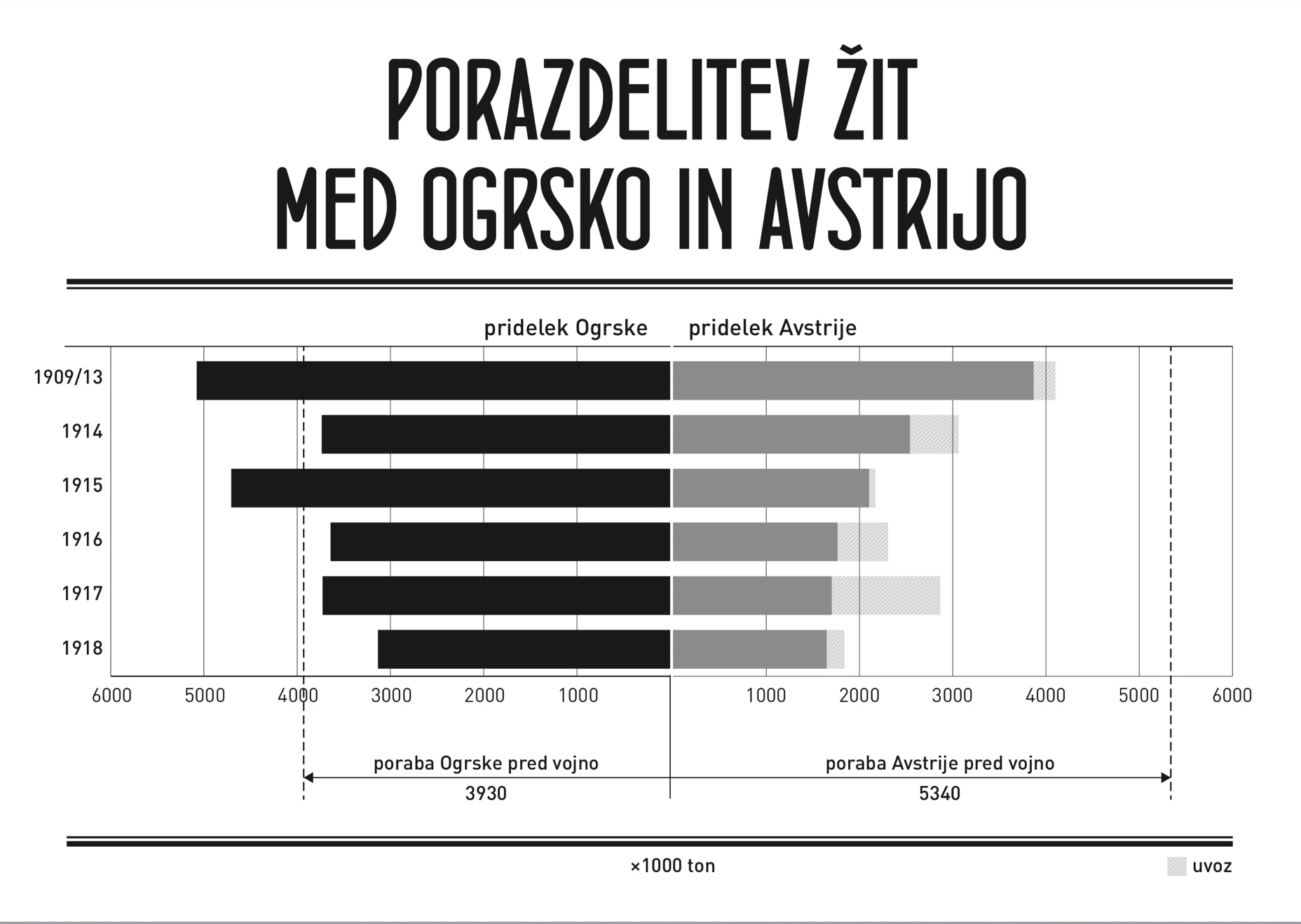
Conditions in the Countryside
Shortage and soaring prices after the outbreak of war affected the urban population the most. In the countryside, more food was available, therefore, inhabitants of larger cities often frequented local farms to obtain basic supplies. The Austrian authorities were aware of the importance of food self-supply in war time. They enthused school children to work on the fields, they also involved prisoners of war, refugees of both genders. In the period of the most intensive farm work, enlisted soldiers were allowed to return to their homes. Women were encouraged to take over farms and take up farm work.
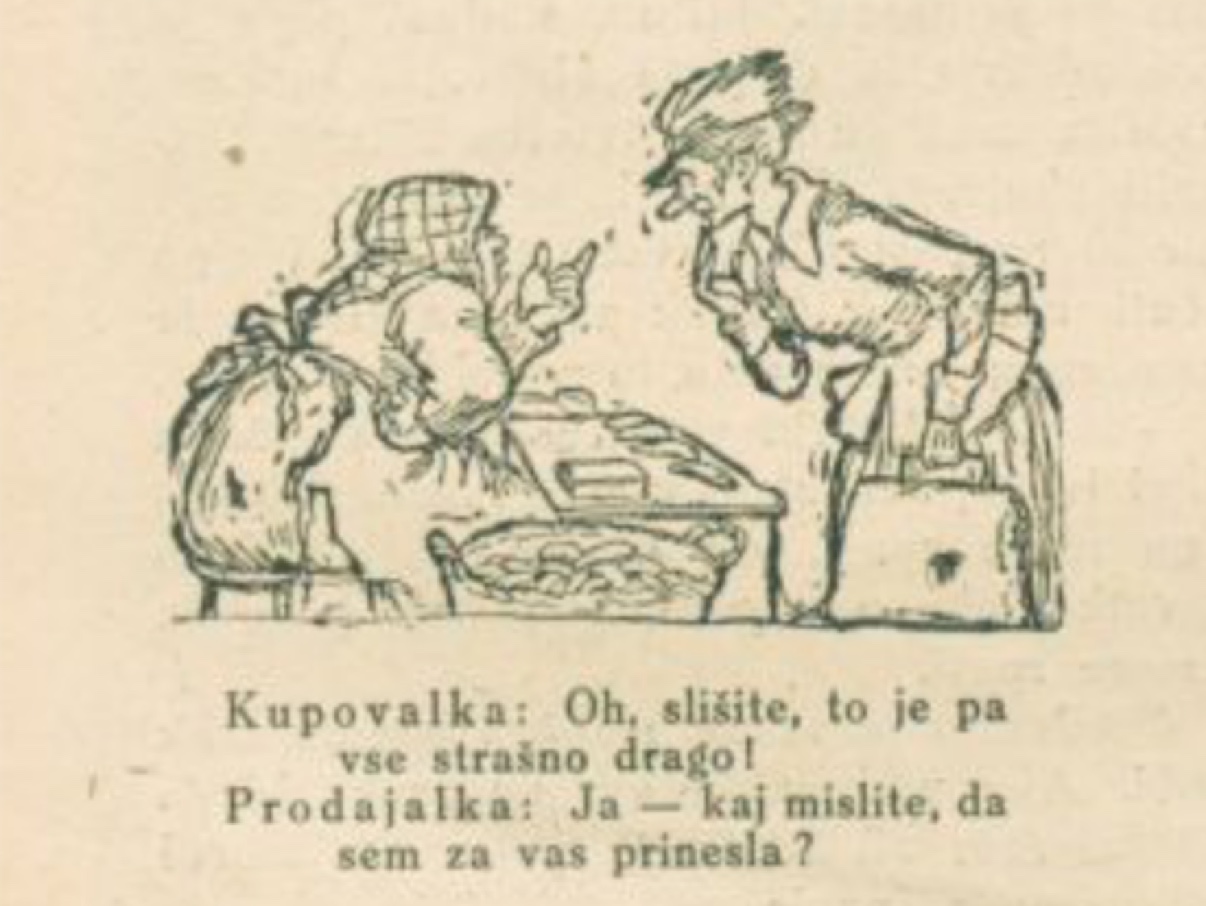
Meščanke so glede cen živil pri pogajanju s kmeticami med vojno običajno potegnile »ta kratko«.
Vir: Ilustrirani Glasnik, 5. 7. 1917. (www.dlib.si)

Ženske so se v kmečko delo vključevale tudi v drugih državah; v Veliki Britaniji in ZDA so v ta namen npr. celo ustanovili civilni organizaciji, obe imenovani Women's Land Army (Ženska podeželska vojska).
Vir: Library of Congress.
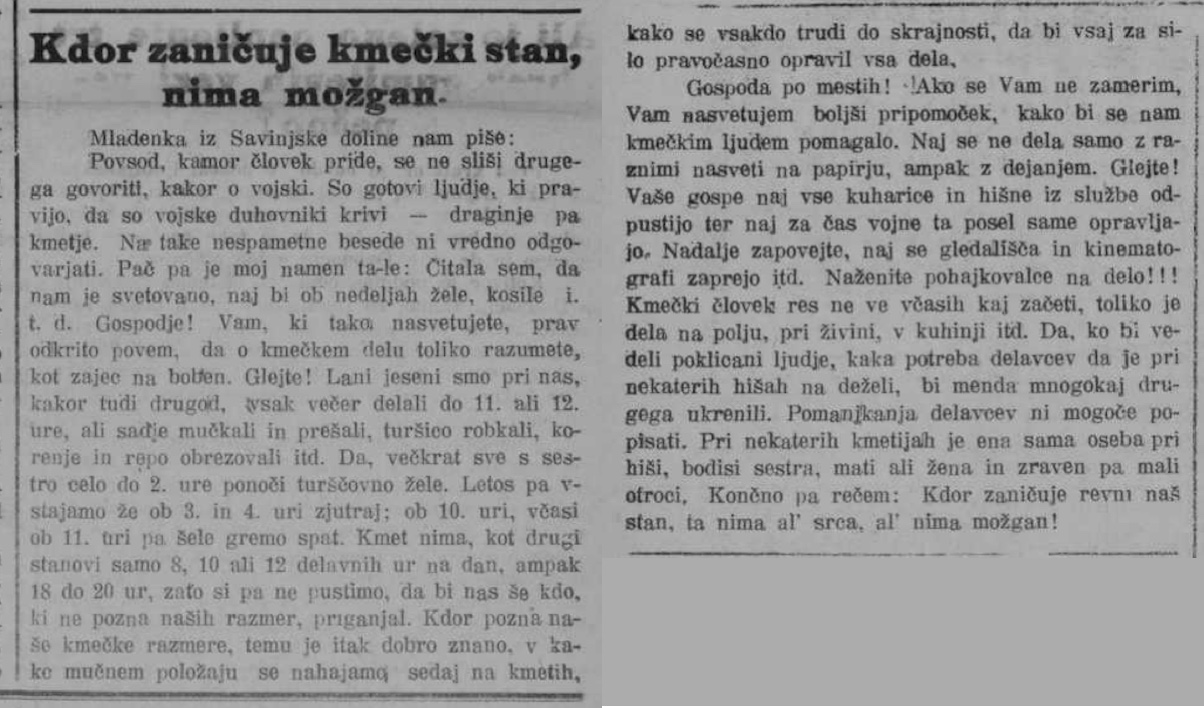
Kmetje in meščani so drug drugega krivili za pomanjkanje in vojno draginjo.
Vir: Slovenski gospodar, 8. 6. 1916. (www.dlib.si)

Okrožnica deželnega glavarja poziva vse prebivalce, še posebej ženske, naj požrtvovalno opravljajo kmečka opravila.
Vir: Zgodovinski arhiv Ljubljana.
Military Food
Sustenance is a fundamental human need, it is of vital importance that this need is met, since hungry soldiers are disinclined to fight. The high commands of warring countries were well aware of that; prior to the outset of the conflicts, the food supply systems for soldiers had been planned with care but also tested in the manoeuvres. However, in war time, these systems did not prove successful everywhere. Field kitchens on wagons and crates that each Austro-Hungarian troop was allocated moved sluggishly behind the penetrating units in the difficult terrain. In the fortified battlefields, the food supply was hindered by enemy’s artillery that focused particularly on supply paths between the front line and the hinterland from where food and drink was being carried on foot or by cattle. Despite the concern for regular food supply of the front line, a portion of soldiers suffered hunger and thirst. Particularly from 1916 onwards, the supply of the Austro-Hungarian army deteriorated drastically due to foodstuff shortage and insufficient food production.
Vir: Januš Golec, Vojni spomini, Slovenski gospodar, 28. 2. 1918.
Ženska je pač — ženska. Zagleda se v enega, temu bi postregla z vsem mogočem — drugemu pa ponudi samo najpotrebnejše in še to z neusmiljeno osornostjo. Mene ni marala nobena, a zato sem pa bil tudi revež na zabavi in želodcu.
Zapis vojaka Jakoba Prešerna v času velikonočnih praznikov leta 1916.
Vir: Jakob Prešeren, Vojak 1915‒1918, 2014.
Preživljamo praznike, zraven pa stradamo. Včeraj ni bilo ne kruha, ne kosila, pač pa so nam dovolili, da za kosilo lahko pojemo vsak po eno rezervno porcijo prepečenca in eno celo konzervo. /…/ Vendar pa je vojaštvo civilistom izpraznilo vse zaloge, tako da se niti za denar ničesar več ne dobi. Želodec nam poje kot gramofon s pokvarjeno ploščo.
Gorica












































